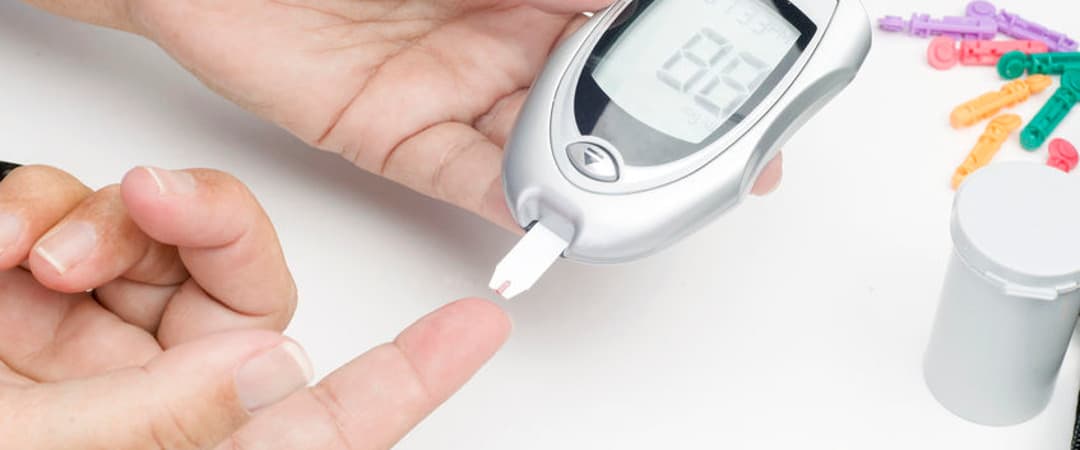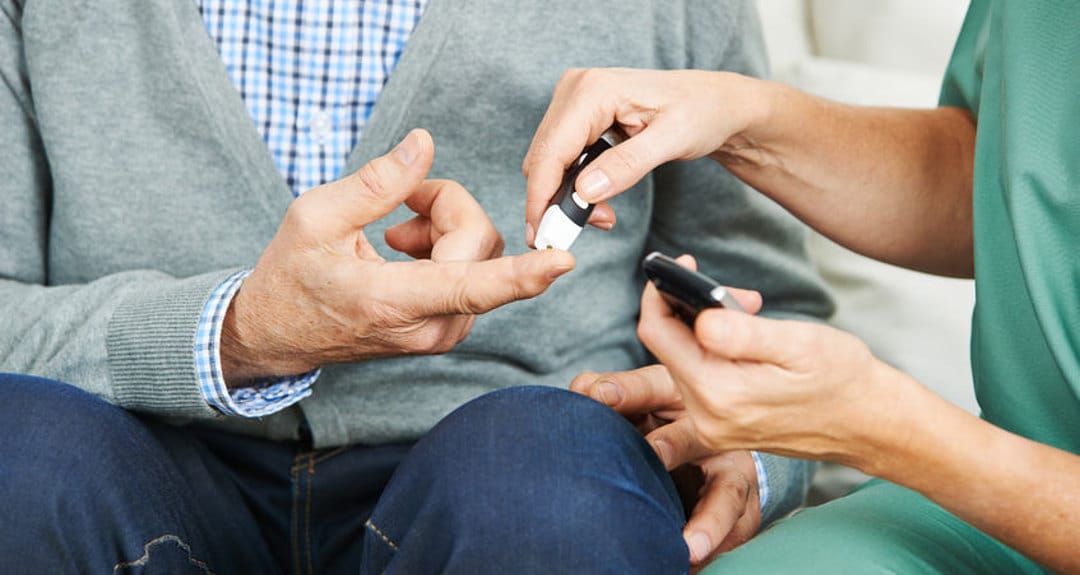How to Reverse Diabetes
Around the world, over 415 million people live with diabetes… and that number is only increasing. What if it were possible to reverse diabetes and make that number go down instead of up? New research suggest that it may be possible to reverse diabetes using diet and exercise changes geared towards weight loss. Here we’ll talk about diabetes, what causes it, and – most importantly – how to reverse it!
Use the Table of Contents below to jump to a specific section, or just scroll down to start from the top!
Table of Contents
What is Diabetes?
Diabetes mellitus, more commonly referred to as diabetes, describes a group of metabolic disorders that cause elevated blood glucose. This can either be due to insufficient insulin production (in type 1), or because of the cells’ inability to respond to said insulin (in type 2). Both errors cause an excessive amount of sugar to accumulate in our blood, which in turn affects the entire body. When left untreated, diabetes can lead to various complications including: diabetic ketoacidosis, heart disease, stroke, kidney disease, limb amputation, depression, anxiety and blindness.
Diabetes is, therefore, a serious condition that affects the entire body. Thankfully, diabetes is highly manageable with diet, exercise, medication and/or insulin. Research suggests that Type 2 diabetes, which accounts for 85-90% of all known cases, can even be reversed or sent into remission! So, while a diabetes diagnosis may be life-changing, don’t lose sight of the fact that it’s still entirely possible to live a long and full life with diabetes.
What Causes Diabetes?
Insulin – the hormone most-associated with diabetes – works with other hormones to control blood sugar and hunger. In a healthy person, insulin levels-out blood sugar by signaling muscle, fat and liver cells to absorb the glucose (sugar) from ingested foods and burn it off as energy. If there’s more glucose in the body than what’s currently needed, insulin signals the body to store excess glucose in the liver. Those glucose stores can be accessed for energy at a later point in time. However, in diabetes patients, the normal functioning of this hormone is altered. The specific changes depend on the type of diabetes.
Type 1 Diabetes
Type 1 diabetes mellitus, previously known as “insulin dependent diabetes mellitus” or “juvenile diabetes”, is usually diagnosed in children and young adults (although it can appear at any age). It is an autoimmune disease, determined largely by genetics, and is not preventable. In type 1 diabetes, the immune system attacks and destroys cells in your pancreas that create insulin. This results in a shortage of signals to pull glucose out of the blood, which in turn causes glucose to remain in circulation and eventually pushes blood sugar levels outside of healthy limits. There is no known cure for type 1 diabetes, but it is manageable over the course of a lifetime with diet, exercise and daily insulin injections.
Type 2 Diabetes
Formerly known as “non-insulin-dependent diabetes mellitus” or “adult-onset diabetes”, type 2 diabetes mellitus occurs when you’re body doesn’t respond properly to insulin. This is called insulin resistance. In insulin resistance, muscle, fat and liver cells stop responding properly to insulin and struggle to absorb available glucose from the bloodstream. When your cells cannot properly utilize normal amounts of insulin, the pancreas goes into overdrive to produce even more insulin. Eventually this chronic overwork can damage the cells in your pancreas and lead to type 2 diabetes. It can also cause shortages of insulin further down the road. Type 2 diabetes can develop at any age, and is highly-related to lifestyle choices. In representing 85-90% of all diabetes cases, type 2 is the most common variation of diabetes. It is most often managed with diet, exercise and oral medication, but may sometimes also require insulin to control blood sugars. New research suggests it may be possible to reverse diabetes in type 2 patients.
Other Types of Diabetes
In addition to type 1 and type 2 diabetes, you may have also heard of gestational diabetes or LADA.
Gestational diabetes is a type of diabetes that occurs when pregnancy hormones interfere with a woman’s ability to utilize glucose while she is pregnant. It usually goes away soon after child birth. LADA, or late autoimmune diabetes in adults, is also called diabetes 1.5. It is an autoimmune disease in which patients initially present with insulin resistance (similar to type 2), but eventually completely cease insulin production (similar to type 1). Treatment depends on the stage of the disease.
There are also a variety of uncommon types caused by genetic defects related to insulin secretion, monogenic diabetes, cystic fibrosis-related diabetes, and even steroid-induced diabetes.

Can Type 2 Diabetes Be Reversed?
The number of patients diagnosed with type 2 diabetes grows every day. Since this disease is largely brought-on by lifestyle choices, scientists have begun to wonder if it could also be eliminated through a removal of those same habits. Reversing type 2 diabetes, or sending diabetes into remission, is achieved through weight control, healthy eating and exercise.
“But,” you might be asking yourself, “why hasn’t my doctor mentioned this at all?”
One barrier in the how to reverse diabetes conversation is that most medical professionals don’t view diabetes as reversible. Type 2 diabetes treatment has traditionally revolved around managing the symptoms of disease, not treating the underlying cause. As a result, most medical professionals view diabetes as highly-manageable, but not curable. Unsurprisingly, then, there exists no hard-line criteria for when a patient is considered “cured” or “in remission” from diabetes. Other doctors who had considered this possibility have been concerned with the difficulty involved in achieving a diabetes remission or on the risk of patients relapsing.
A new wave of studies aims show that reversing type 2 diabetes is achievable for thousands of patients, resulting in improved health outcomes and reduced healthcare costs.
Steps to Reverse Diabetes Naturally
A study in the from Newcastle and Glasgow Universities showed that type 2 diabetes could be reversed by losing weight. This reasearch indicates that with the proper nutrition and exercise, weight loss and long-term remission of their diabetes is possible.
Most proponents of this technique agree, and focus on weight loss as a means to reverse diabetes. While more extreme options like weight loss surgery or prescription appetite suppressants prove an effective option, we’ll focus here more on achieving the necessary weight loss with diet, exercise and lifestyle changes.

Type 2 Diabetes Diet Plan
Nutrition is critical to any weight loss plan. It is far easier to control the number of calories ingested than to burn them through physical activity. Changing to a diabetic-friendly diet designed for sustainable weight loss can make a big difference.
No food is completely “off-limits”, but some foods are better than others. Some of the best foods for type 2 diabetes include whole grains, colorful vegetables, lean proteins. Whole grains are preferable to white carbs because whole-grain foods (like 100% whole wheat bread, oatmeal, whole grain pasta and quinoa) have more fiber to counteract the sugar-spiking effect of simple carbs. Still, it’s important to eat moderate amounts of carbs and spread them out through the day so that you minimize spikes or lows in your blood sugar. Colorful veggies are low calorie and contain lots of vitamins and fiber to help keep you healthy. This makes them a great choice for people with diabetes who are aiming to lose weight. Just beware of starchy vegetables like potatoes and corn, which count more like a carb (to be limited) than a vegetable. Finally, lean proteins like fish, chicken and lean beef give you the protein you need to repair muscles and maintain blood sugar. Unlike carbs that have an immediate – and more short-lived – effect on blood sugar, proteins and fats give you a more sustained fuel source. Make sure to include all three types of macronutrients (carbs, protein & fat) in your daily diet.
It’s also okay to indulge in less healthy foods like cake, ice cream or chips, as long as you do so in moderation. There’s a common belief that people with diabetes can’t have any sugar or junk food – that’s not true. You just need to be a little more careful that (1) you eat a reasonable portion, and (2) you balance it out with some healthy, lean proteins to keep your blood sugar in check!
Aim to avoid or limit highly-processed foods, soft drinks, energy drinks, and flavored coffees and sweetened teas. These foods prove especially damaging to your health, and sweetened drinks (soda, sweet tea, etc.) can produce dangerous spikes in blood sugar if you have diabetes.
If you’d like to read more, the American Diabetes Association has a great informational resource page on eating patterns and meal planning. It can help you get started with a diet plan for type 2 diabetes that’s designed for healthy, long-term weight loss.
Fasting and Diabetes
Fasting and diabetes have become risky yet tempting dance partners. Fasting, specifically intermittent fasting, is a highly polarizing weight management technique that involves not eating for long periods of time. It has caught on recently within the weight loss community, including among those interested in reversing diabetes. However, for diabetes patients, this approach poses some serious problems.
One of the biggest drawbacks of fasting in people with diabetes is the very real, increased risk of hypoglycemia (low blood sugar) or diabetic ketoacidosis. Most medical professionals recommend against intermittent fasting if you are on insulin, or blood sugar lowering medication like sulphonylureas or glinides, due to the risk of unintentionally going low. Fasting may also increase the risk of diabetic ketoacidosis. This complication occurs when the body can’t product enough insulin and starts breaking down fat as fuel. It causes a buildup of acid in the bloodstream that can have serious, even fatal, consequences.
On the other hand, advocates of fasting with type 2 diabetes cite numerous studies that show reversing diabetes is possible through weight loss. Pro-fasting professionals claim that outside of bariatric surgery, fasting is one of the most effective ways to reverse diabetes. Most studies on fasting show positive results for the type 2 diabetes or pre-diabetic patient, but long-term sustainability is unknown.
If you’d like to read more about the specific fasting methods used for weight management in people with diabetes and the results of the studies, please click here.

Diabetic Workout
Physical activity is also important to weight management, and therefore a major part of your plan to reverse diabetes! While it is nearly impossible to lose weight through exercise alone, daily fitness has numerous benefits apart from weight loss. It’s good for physical and mental health, plus it definitely helps when you’re trying to slim down.
When planning your exercise routine, remember to set realistic goals! If walking to the end of the street and back is a chore, don’t aim to run a 5K in two weeks. Remember that progress takes time, and that you’re only human. Be proud of the little wins each day, and try to keep moving forward, but don’t push yourself to exhaustion or injury because you’re overly-eager.
Aerobic Exercise
According to the American Diabetes Association, aerobic exercises are important in a diabetic workout plan because they help your body use insulin better, strengthen your heart and bones, and improve blood circulation. Aerobic exercise also lowers the risk of heart disease.
Aerobic activities include bicycling, dancing, swimming, water aerobics, tennis, jogging/running, hiking, rowing, skating (ice or roller-skating) or even walking briskly. The type of aerobic activity itself is less important than consistency and commitment. Aim for at least 30 to 60 minutes of moderate-to-vigorous aerobic activity each day.
Strength Training
Strength training (also known as resistance training) helps lower blood glucose and build strong muscles and bones, reducing the risk of bone fractures. Aim to strength train 2-3 times a week, in addition to regular aerobic activity.
Some examples of resistance training include: weight machines, lifting heavy objects (like water bottles or paint cans at home), push-ups, sit ups, planks, squats, or any other activity that builds and strengthens muscle (like heavy gardening).
Supplements for Diabetes
Supplements for diabetes and weight loss remain controversial, but supported by many health care professionals. You should not replace a well-balanced diet with a pill, but supplements can provide a good safety net to make sure you’re getting all of the vital nutrients.
Multivitamin supplements are important because they help prevent any deficiencies that may occur due to limited dietary options, whether by choice (e.g. a strict diet) or necessity (e.g. a tight budget). Unless you have a medical deficiency, normal multivitamin/multi-mineral supplements will cover your general needs. Talk to a dietitian or pharmacist at your local supermarket for some recommendations about the best brand.
In term of supplements for diabetes specifically, chromium and magnesium have been getting a lot of attention. Chromium enhances the action of insulin and minimizes impaired glucose tolerance in type 2 diabetes. However, research shows this supplement is most beneficial when you have low levels of chromium. Its efficacy in patients with already-sufficient levels of chromium is much more hotly debated.
Magnesium may also prove beneficial for people with diabetes. Recent studies indicate that high magnesium intake is associated with lower fasting insulin concentration. This may be of particular interest for those with pre-diabetes, given that a diet rich in magnesium could lead to a lower risk of developing type 2 diabetes.
Weight loss supplements or aides – like fat burners or appetite suppressants – may also help people wishing to put diabetes into remission. Most of these products can be purchased over the counter and can help you achieve your weight loss goals.
If you’re taking other medications, always make sure to check with your doctor and pharmacist before starting any new vitamins or supplements. Some prescription and over-the-counter medications interact negatively with supplements, so it’s important to double-check before you add anything new.
So, can we reverse diabetes?
Recent evidence indicates that it is possible to reverse diabetes. This can be achieved through strict adherence to a healthy diet and exercise plan, plus the support of your doctor. Through controlling what you eat, committing to regular workouts and possibly adding a supplement, the idea of reversing type 2 diabetes could become a reality.
Are you, or someone you know, interested in trying to reverse diabetes? Share your thoughts with us in the comments section below!







Interesting… I’ve had type 2 for almost 10 years now and not once has my doc talked to me about “reversing” it. I don’t know… I’m not sure I buy it, but it sure is interetesting to think about!